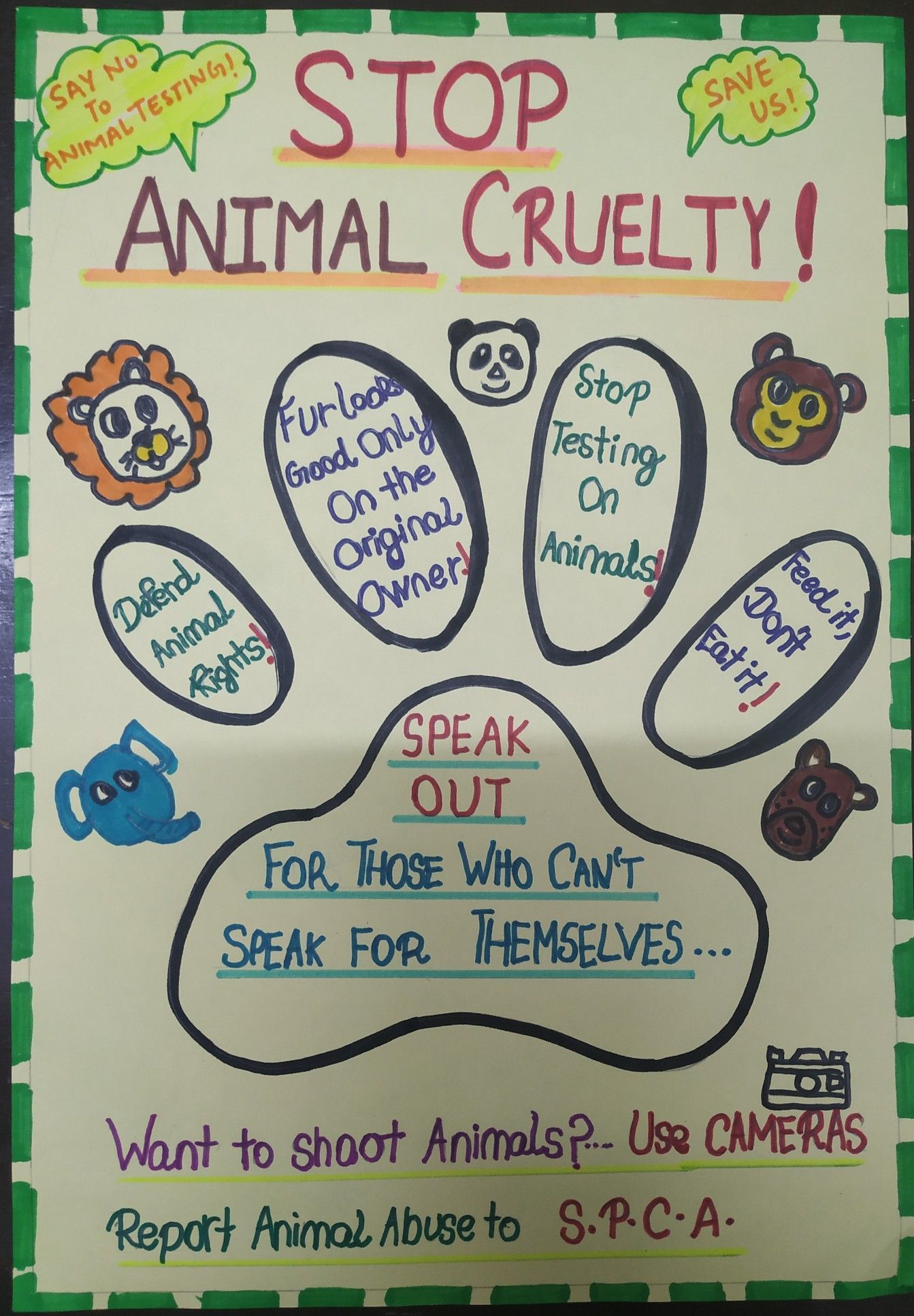Animal cruelty remains an insidious issue that demands attention. It is a problem that surreptitiously inflicts suffering upon countless creatures across the globe. Engaging middle school students in this vital cause not only cultivates empathy but also fosters a sense of responsibility toward our fellow beings. In an era where awareness can lead to transformative change, creative projects and innovative ideas are essential tools to evoke compassion and understanding. This article outlines effective methods to inspire young minds to advocate against animal cruelty.
Firstly, art has a remarkable power to convey complex emotions and ideas. Encouraging students to create a series of artistic pieces—be it paintings, sculptures, or digital designs—could serve as an initial touchstone. One compelling project could be the design of awareness posters. By utilizing striking visuals and poignant slogans, students can craft posters that illustrate the harsh realities of animal abuse. For example, a piece depicting a neglected dog alongside a powerful call to action can provoke thought and spur conversations outside the classroom. Displaying these posters in the school hallways or community centers can amplify their reach, effectively seeding awareness among a broader audience.
Moreover, multimedia presentations can further enhance this educational endeavor. Organizing a “Day of Awareness” event can stir excitement. Students can collaboratively research various aspects of animal cruelty such as stray populations, factory farming, and animal testing. Using their findings, they could develop presentations incorporating video clips, infographics, and storytelling techniques. This interactive experience not only enriches their understanding but also encourages discussions among peers. Such presentations can culminate in a school assembly where students showcase their projects, ultimately transforming the school environment into a hub of informed dialogue about animal welfare.
In addition to visual arts, literature can be a poignant avenue for awareness. Organizing a writing competition centered around animal rights encourages students to delve deeply into the subject. By crafting essays, poetry, or even short stories that embody the plight of animals, students can articulate their thoughts and feelings with a uniquely personal touch. For instance, composing a narrative from the perspective of an abused animal could invoke empathy and reflection, prompting readers to consider the mindset and experiences of such beings. This kind of creative writing not only captivates imagination but also ignites a dialogue regarding moral obligations toward other living creatures.
Furthermore, community engagement plays a pivotal role in amplifying awareness beyond school walls. Partnering with local animal shelters or rescue organizations can provide students with hands-on experience in the field. Through volunteer work, students can witness firsthand the impact of neglect and the importance of advocacy. Arranging field trips to these facilities allows students to meet rescued animals and learn about the shelter’s mission. They could then organize fundraising efforts or supply drives to support these organizations, forging a deeper connection between the students and the animals they seek to protect.
Another compelling project involves the creation of an advocacy campaign centered on social media. In today’s digital age, platforms like Instagram, TikTok, and Twitter serve as formidable outlets for spreading awareness. Students could design a campaign encouraging their peers to share posts about animal cruelty, utilizing hashtags that connect with broader movements. Producing short, impactful videos that portray the harsh realities faced by animals can make the subject matter more relatable. Engaging their social circles online can build a community of advocates who are willing to share, learn, and act in the cause of animal welfare.
Additionally, documentary filmmaking can serve as a highly effective project for those inclined toward video production. Students can collaborate to create a short documentary that explores local animal-related issues, such as stray animals in their area or the treatment of animals in circuses. This approach would not only hone their research and technical skills but also allow them to present factual information in a compelling narrative format. Screening the documentary at school and inviting the community can spur further discussion and action, enabling students to become catalysts for change.
To encourage a sustained commitment to the cause, establishing an animal rights club within the school could provide a platform for ongoing activism. Regular meetings can serve as a space for brainstorming new initiatives, planning events, or inviting guest speakers from relevant organizations. Facilitating discussions on emerging topics regarding animal welfare can instill a lasting sense of advocacy among students. This club would not only nurture leadership skills but also prolong engagement with the crucial issue of animal cruelty.
In summation, the combination of creativity and critical engagement is vital in raising awareness about animal cruelty among middle school students. By implementing projects that span the arts, literature, community service, digital campaigns, and more, students can gain a multifaceted understanding of the complexities surrounding this issue. Moreover, these creative endeavors can transform their peers’ perceptions, stoking a collective desire to take action. By fostering empathy, promoting dialogue, and engendering action, young activists can emerge as powerful proponents for a future free from animal cruelty.







